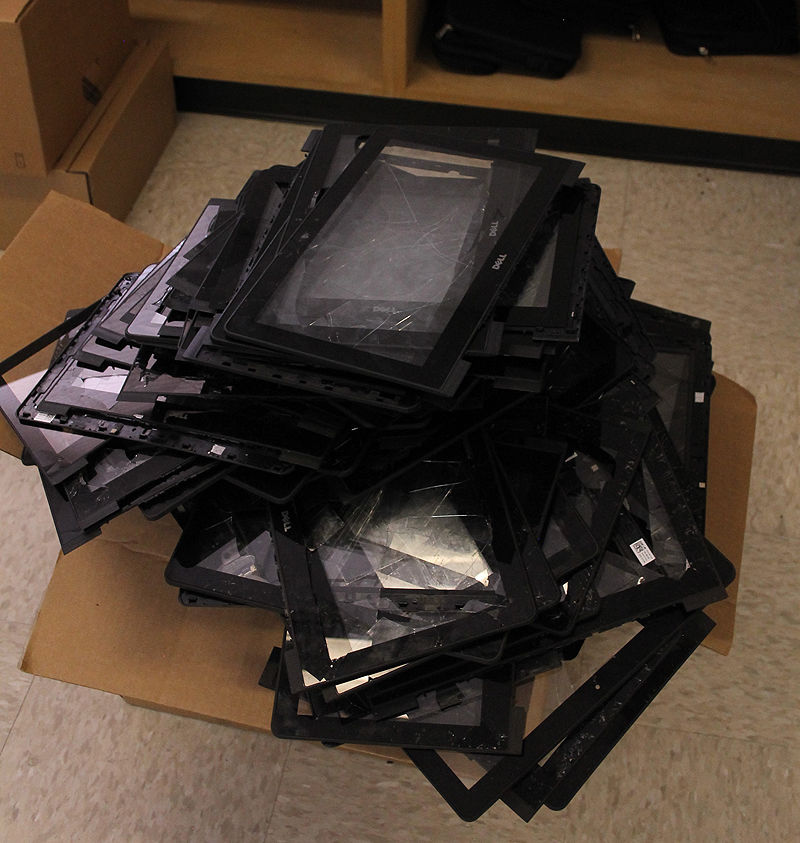After two years, Carbon School District officials decided that middle school students will not take their Chromebooks home every night. The practice is not cost effective for the district, nor is it in the best interests of students.
On August 24, the first day of school, students will still use Chromebooks in class, but the devices will remain in classrooms at the close of each day.
Helper Middle School piloted Chromebooks as take home devices two and a half years ago. Helper and Mont Harmon fully implemented take home devices in the fall of 2015. District officials intend for Chromebooks to partially replace textbooks. They are also vehicles for sending assignments home.
However the damage and loss problem, which was small at first, blossomed this past year caused the middle school principals and the technology department to reevaluate how the program was working. Some of the damage was accidental, but much of it resulted from students using the devices improperly and damaging them.
“All of us at Helper Middle School are 100 percent in support of restricting Chromebooks to classroom use,” said Mika Salas, the Principal of the school.
According to Phil Feichko, Carbon School District’s Director of Technology, the abuse rate was causing some real problems, including ballooning costs to the district. At the May meeting of the Carbon School Board, he and Seth Allred, Principal at Mont Harmon told the board about the problems with the Chromebook take home program.
“We are kind of looking at a refresh for next year and look at it from a financial standpoint,” Feichko told the board. “We have had about 350 broken screens this year.”
Not all broken screens came from the middle schools, but most are from those campuses and that age group.
“We also have to consider that when we begin school we have to pass them out and get them all set up with the students. If the devices are in classrooms in carts, they would be available the first day of classes,” he noted. “I think with that kind of a process the repairs on these devices would almost go to zero.”
He said he has also heard a lot of complaints not only from teachers and administrators but also from parents about the fact that the Chromebooks at home become distractions, often being used for things not related to school such as playing games and other activities.
When asked by the board about the homework situation that the devices were supposed to help with, Allred said that the ten period schedule at the middle schools has changed that dynamic and homework has been drastically reduced.
“In talking to teachers there will be very little need for devices at home,” he said. “If there are projects or assignments that need that type of technology, most students have the equipment and ability to work from home. But we also will make allowances for students who may not have computers at home, so they can still take Chromebooks home at the end of the day in those limited circumstances. That is a conversation we will have to have with those students and their parents.”
The board asked the schools to contact parents through an official letter explaining how they will handle the use of the devices in the future.
Change in Chromebook policy coming to middle schools

Broken Chromebook screens piled up in the repair area of Carbon School District’s Technology Center. A major Chromebook policy is coming to the district upon the start of the school year.
